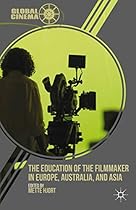

Conversations with Igor Stravinsky is the first of the celebrated series of conversation books in which Stravinsky; prompted by Robert Craft; reviewed his long and remarkable life. The composer brings the Imperial Russia of his childhood vividly into focus; at the same time scanning what were at the time the brave new horizons of Boulez and Stockhausen with extraordinary acuity.Stravinsky answers searching questions about his musical development and recalls his association with Diaghilev and the Russian Ballet. There are sympathetic and extraordinarily illuminating reminiscences of such composers as Debussy and Ravel (the only musicians who immediately understood Le Sacre du Printemps); while mischievous squibs are directed at others; most notably perhaps against Richard Strauss; all of whose operas Stravinsky wished to admit ... to whichever purgatory punishes triumphant banality.The conversations are by no means confined to musical subjects; ranging uninhibitedly across all the arts: Stravinsky gives unforgettable sketches of Ibsen; Rodin; Proust; Giacometti; Dylan Thomas and T S Eliot.The conversations between Igor Stravinsky and Robert Craft are unique in musical history. The penetration of Crafts questions and the patience and detail of Stravinskys answers combine to produce an intimate picture of a man who has sometimes puzzled; often delighted; and always intrigued ... The Sunday Times
#4556778 in eBooks 2013-07-17 2013-07-17File Name: B00E9BJNPE
Review
1 of 1 people found the following review helpful. More a history of human use of the idea of orangs than natural history. The writing is good; the chapters a bit tedious.By lyndonbrechtI expected a much different book; more along the lines of natural history and conservation. Those are covered but rather briefly. The book mostly considers cultural use of orangutans; mostly European and American (the book portrays peoples living near the apes as not particularly interested in them). What I mean by that is the chapters examine the European debate about apes and the relationship of apes to humans; starting early in colonial times (Dutch colonialism in Indonesia--the apes are native to Borneo and Sumatra--began in the early 1600s).There were all sorts of interpretations; some of them using orangs as metaphors for human traits; some using the apes as elements in satires and novels. Science gradually came to a better understanding of them.The story the book tells is largely of human use of orangs; as much the idea of orangs as anything else; especially in popular literature (which continues as "Planet of the Apes" sequels continue into the 21st century). Living and dead orangs and dead orang parts were popular in the cabinets of curiosities on the 1700s and the natural history exhibitions of the 1800s; which gradually shaded over into modern zoos; and the sense of show gradually became that of education and conservation. Orangs seem to have been for a time popular figures in plays; acted by men in costume.Among the sections of the book that readers may find of interest are chapters 5 and 6; which examine orangs as characters in fiction; and chapter 7 which does the same for orangs on stage and screen. The chapters can be a little tedious. Chapter 8 looks in a general way at zoos and chapter 9 at extinctions. The latest survey; says this book; in 2004 found about 7;000 orangs in Sumatra and 57;000 in Borneo; but given extensive forest fire events and heavy harvesting of timber; that number is probably considerably less.Chapter 10 looks at conservation; with some pessimism; and also examines the idea of the great apes having legal rights.